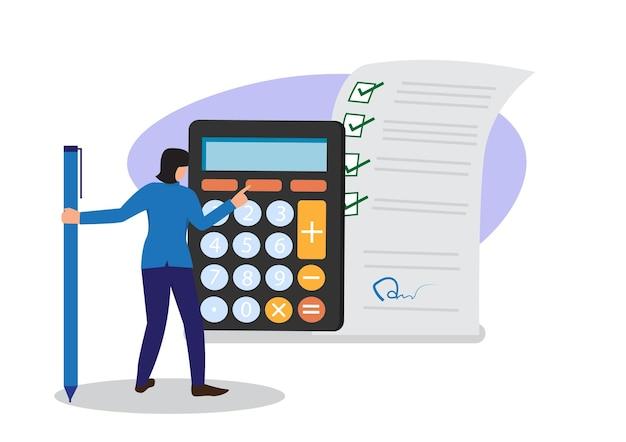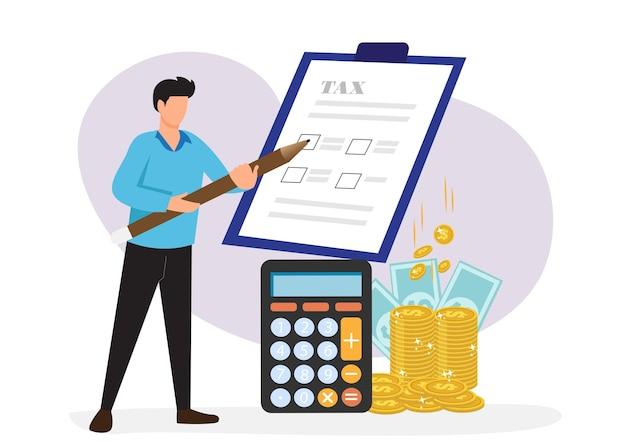Cost estimation plays a critical role in project planning and execution. It involves predicting the financial resources required to complete a project successfully. However, cost estimation is not a straightforward process. It is influenced by various factors and can present several challenges that project managers must overcome.
In this blog post, we will explore the difficulties faced in cost estimation and discuss strategies for dealing with them. We will delve into the different factors that affect project costs, including the importance of resources and the types of costs typically encountered in project management. We will also touch on the key components of project quality and the calculation of project costs. Additionally, we will explore the role of quality techniques and QMS tools in ensuring accurate cost estimation.
Join us as we navigate through the complexities of cost estimation in project planning, shedding light on the various challenges that arise and sharing valuable insights on how to overcome them. Let’s dive into the world of project cost estimation and ensure your projects are successfully aligned with your financial resources.

Understanding the Challenges of Cost Estimation
The Unpredictable Maze of Numbers
Estimating costs is like trying to navigate a maze blindfolded, only to find out that the maze is constantly changing its layout. It’s a perplexing challenge that businesses and project managers encounter on a regular basis. So, what are the difficulties in cost estimation? Let’s dig into the intricacies:
1. Hidden Expenses That Pop up Like Whack-a-Mole
Just when you think you’ve accounted for all the expenses, bam! – out of nowhere, an unexpected cost springs up. It’s like playing whack-a-mole with your budget. Whether it’s additional materials, unexpected delays, or even a sudden rise in coffee consumption (caffeine-starved team members can be expensive), these hidden expenses can throw your estimations out of whack.
2. The Crystal Ball Doesn’t Come with a Price Tag
If only we had a crystal ball to predict the future with certainty! Alas, cost estimators are left to rely on their experience, gut feelings, and a dash of statistical analysis to make educated guesses. But let’s face it, predicting the future is tricky business. Economic fluctuations, market trends, and other unforeseen factors can turn your meticulously crafted estimates into mere guesswork.
3. The Devil is in the Details (That Keep Changing)
You painstakingly gather every last detail for your cost estimation, only to realize that those details are as stable as a wayward tumbleweed. Project scopes change, client requirements evolve, and stakeholders come up with new demands faster than you can say “scope creep.” Keeping up with these moving targets requires the agility of a circus performer, otherwise, you’re at risk of underestimating costs and finding yourself in a budgetary tightrope act.
4. Human Error – The Silent Cost Creator
Sure, we humans are pretty amazing, but we’re not immune to making mistakes. In fact, we’re quite talented when it comes to miscalculations. From typos in formulas to misplaced decimal points, errors can easily slip into your cost estimation, transforming your projected profits into a game of “Where did it all go wrong?”
5. Lady Luck and Her Unpredictable Charms
As much as we’d like to believe that we have control over every aspect of our lives, Lady Luck often has other plans. Sometimes, unexpected events like natural disasters, political unrest, or even a global pandemic can throw a wrench in the gears of your cost estimation. In such cases, your estimates become about as reliable as a horoscope, leaving you to rely on contingency plans and a prayer or two.
6. The Stakeholder Shuffle
Ah, stakeholders – those lovely beings who hold the power to turn your cost estimation upside down. Their ever-changing needs, demands, and preferences can send your estimates on a rollercoaster ride. Keeping up with their whims can feel like trying to juggle flaming torches in a hurricane. Are their goals aligned? Will they request unnecessary additions? Can their indecisiveness make you tear your hair out? The uncertainty can be overwhelming.
Embracing the Estimation Challenge
So, now that we’ve explored the difficulties in cost estimation, what’s the takeaway? Embrace the challenge! While cost estimation may feel like trying to tame a wild bull, remember that it’s an integral part of project management and business success. By acknowledging the uncertainties, staying adaptable, and continuously refining your estimation process, you can navigate the mysterious maze of costs with more confidence and finesse. Remember, even if the numbers try to trip you up, you’ve got the determination to overcome the challenges that come your way.

FAQ: What are the Difficulties in Cost Estimation
Welcome to our comprehensive FAQ section on the difficulties in cost estimation! In this subsection, we’ll cover everything you need to know about cost estimation and the challenges that come with it. Whether you’re a project manager, a business owner, or simply curious about the intricacies of cost estimation, we’ve got you covered. So, let’s dive right in!
What is Cost Estimation and What are the Different Factors that Affect the Cost
Cost estimation is the process of calculating the expenses required to complete a project. It involves assessing various factors that can impact the overall cost. These factors can include:
1. Project Scope
The scope of a project determines the scale and complexity of the work involved. The larger the scope, the more resources and time needed, leading to increased costs.
2. Resource Availability
The availability of resources, such as skilled labor, equipment, and materials, directly affects cost estimation. Limited availability may result in higher expenses due to increased demand.
3. Project Duration
The longer a project takes to complete, the more costs are incurred. Factors like weather conditions and unexpected delays can further extend the duration, leading to additional expenses.
4. Project Location
The geographical location of a project can impact costs due to variations in labor rates, transportation expenses, and local regulations.
What are Quality Management System (QMS) Tools
Quality Management System (QMS) tools are software applications used to manage and improve the quality of a project. These tools help streamline processes, track project progress, and ensure adherence to quality standards. Some popular QMS tools include:
1. Document Control Software
Document control software helps manage project-related documents, ensuring accuracy, version control, and accessibility to authorized individuals.
2. Risk Management Software
Risk management software assists in identifying, assessing, and mitigating potential risks throughout the project lifecycle.
3. Performance Measurement Software
Performance measurement software tracks key performance indicators (KPIs) to evaluate project performance, identify areas for improvement, and make data-driven decisions.
What are the Difficulties in Cost Estimation
Cost estimation can be a challenging process due to various factors. Here are some common difficulties you may encounter:
1. Unclear Project Requirements
When project requirements are vague or constantly changing, it becomes difficult to accurately estimate costs. Lack of clarity can lead to frequent revisions and cost overruns.
2. Limited Historical Data
Insufficient historical data on similar projects can make cost estimation tricky. Without relevant benchmarks, it’s challenging to accurately forecast expenses.
3. External Variables
External variables such as inflation rates, market fluctuations, and regulatory changes can impact project costs significantly. Predicting and accounting for these variables can be a daunting task.
4. Lack of Expertise
Inaccurate cost estimation may occur when the project team lacks experience or expertise in estimating costs. Without the right knowledge, it’s challenging to account for all relevant factors and accurately predict expenses.
Which is the Most Important Resource on a Project
While every resource is essential for a project’s success, the most crucial resource is often considered to be the project team. A skilled and dedicated team can effectively utilize other resources, mitigate risks, manage costs, and deliver high-quality results.
What are the Major Types of Costs in Project Management
In project management, costs can be classified into three major types:
1. Direct Costs
Direct costs refer to expenses that are directly tied to the project and can be easily traced back. These may include labor, materials, and equipment costs specific to the project.
2. Indirect Costs
Indirect costs are expenses that are not directly attributable to a specific project but are essential for its execution. These may include overhead costs, administration expenses, or general utilities.
3. Contingency Costs
Contingency costs are additional funds set aside to account for unforeseen events or risks that may affect the project. These costs act as a buffer to mitigate the impact of unexpected circumstances.
What are the Three Key Components of Project Quality
Project quality relies on three key components:
1. Quality Planning
Quality planning involves defining project objectives, determining the necessary standards, and outlining the processes required to achieve the desired level of quality.
2. Quality Assurance
Quality assurance focuses on implementing the planned quality activities and processes to ensure that project deliverables meet the defined standards.
3. Quality Control
Quality control involves monitoring and inspecting project activities and deliverables to identify any deviations from the required quality standards. It aims to correct any issues and ensure adherence to the defined quality criteria.
How is Project Cost Calculated
Project cost is calculated by considering various factors, including:
1. Work Breakdown Structure (WBS)
A WBS breaks down the project into manageable tasks, making it easier to estimate the costs associated with each task.
2. Resource Estimation
Estimating the quantity and cost of resources required for each task helps in calculating the overall project cost.
3. Activity Duration
The duration of each activity, along with the associated resource costs, is considered to calculate project costs based on the time required for completion.
What are Quality Techniques
Quality techniques are methods or tools used to ensure and improve project quality. These techniques may include:
1. Statistical Sampling
Statistical sampling involves testing a representative sample from a larger population to draw conclusions about the quality of the entire population.
2. Pareto Analysis
Pareto analysis prioritizes problems or causes based on their frequency or impact, allowing project teams to focus their efforts on the most critical issues.
3. Root Cause Analysis
Root cause analysis helps identify the underlying causes of problems or defects, enabling project teams to address the root causes rather than just treating symptoms.
That concludes our FAQ section on the difficulties in cost estimation. We hope these answers have provided valuable insights into this complex topic. If you have any more questions, feel free to reach out. Happy estimating!
